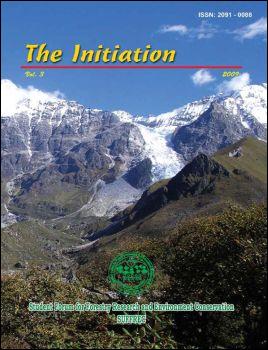Status of Wetlands Conservation in Bardia National Park
DOI:
https://doi.org/10.3126/init.v3i0.2427Keywords:
Wetlands, conservationAbstract
The study of manmade waterhole was carried from July 14, 2009 to July 22, 2009. The surface area and water depth was estimated. Most of the manmade waterholes lie in the Sal Forest of lowland plains and in the Lamkauli Phanta, where ground vegetation is low and wildlife visibility is high. The signs of fauna such as pellets/scat/hoof marks/footprints/feedings remains, scratch etc were recorded. The main objective of this study was to keep record of wildlife observed directly or recorded indirectly in the manmade waterhole, to determine its uses by fauna and, to estimate quantity of water in the manmade waterhole during hot summer seasons. These places are very close to human settlements around east-west highway. These areas are easily accessible so that even poacher can take advantage. Generally, waterhole sites are considered as high risk places for poaching. Therefore, it is necessary to develop a system to patrol and monitor regularly to protect wildlife.
DOI: 10.3126/init.v3i0.2427
The Initiation Vol.3 2009 p.49-56

